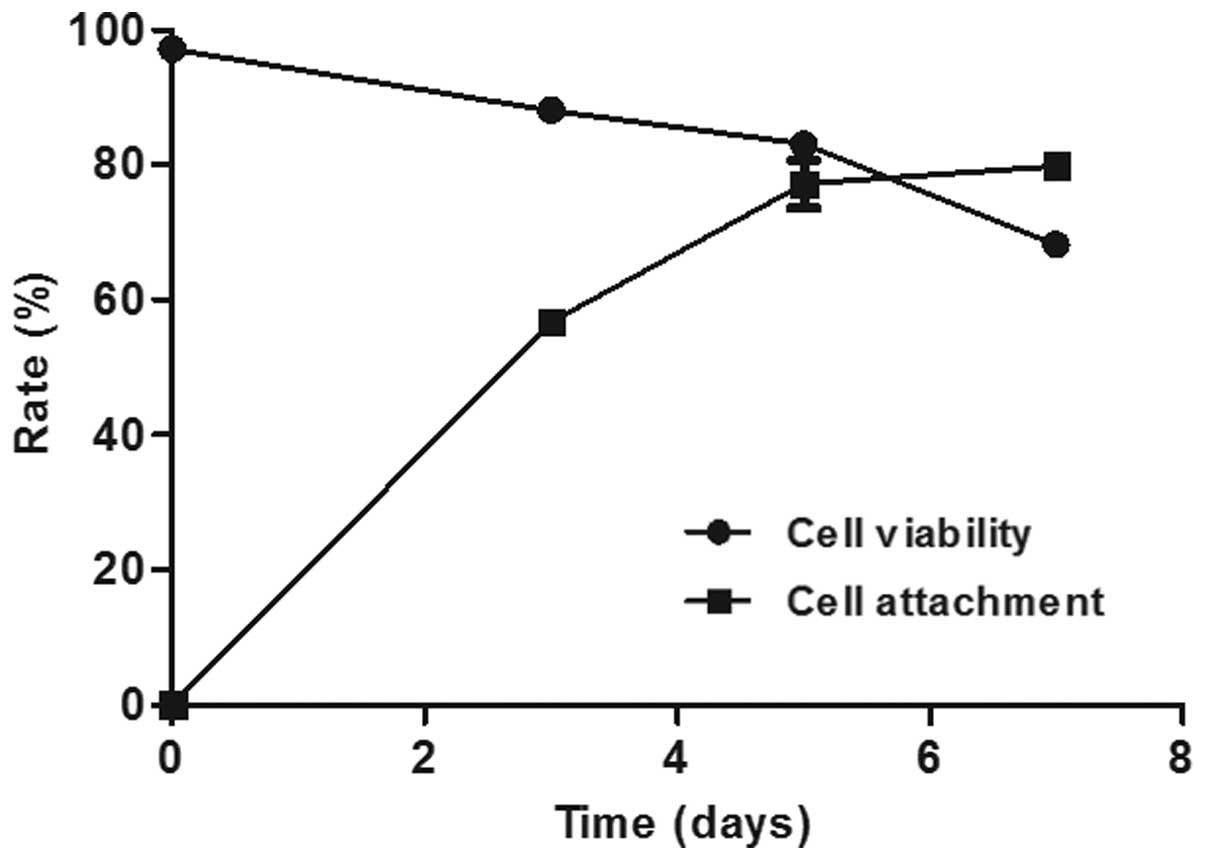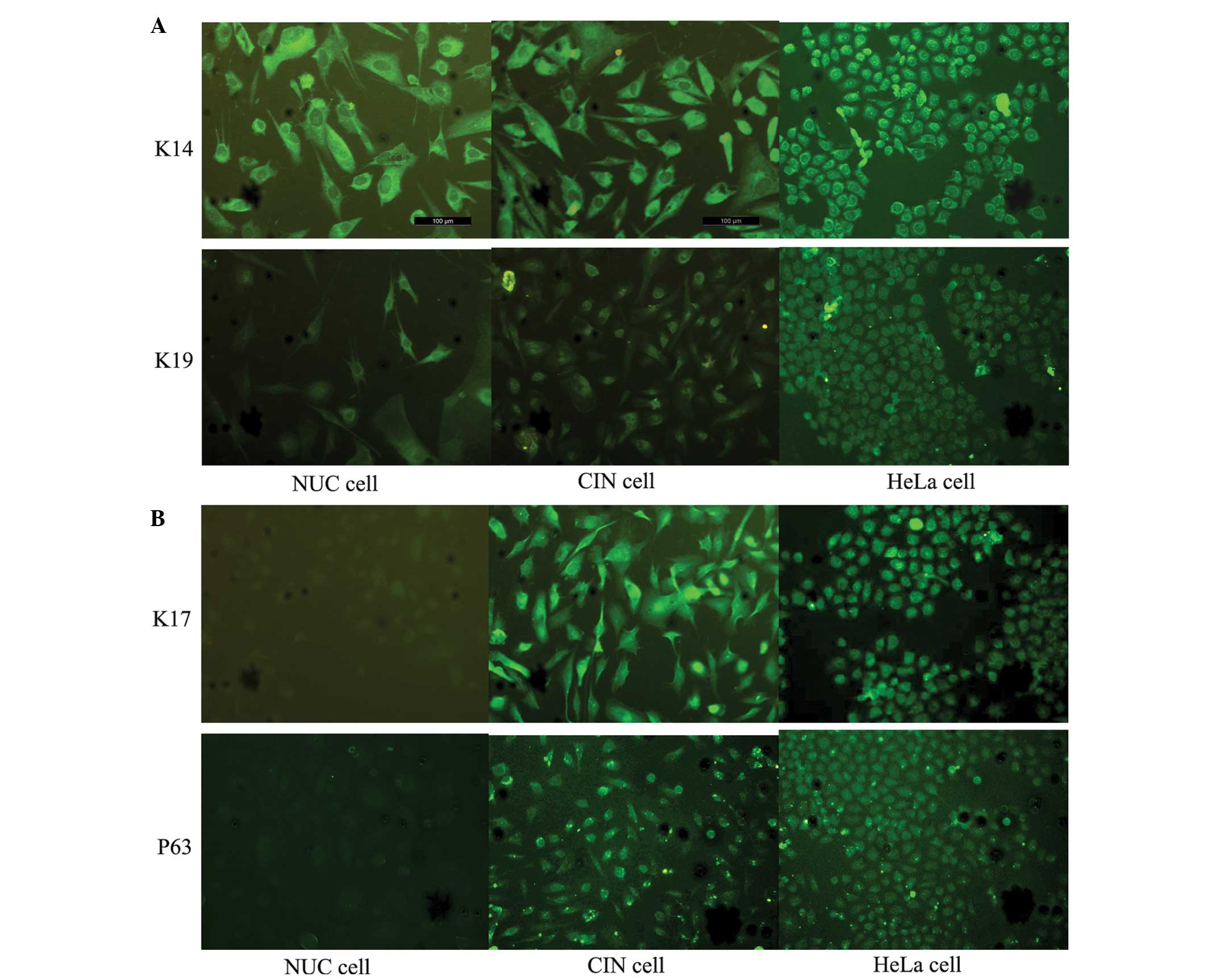|
1
|
Ferlay J, Shin HR, Bray F, Forman D,
Mathers C and Parkin DM: Estimates of worldwide burden of cancer in
2008: GLOBOCAN 2008. Int J Cancer. 127:2893–2917. 2010. View Article : Google Scholar : PubMed/NCBI
|
|
2
|
Stewart BW and Kleihues P: Cancers of the
female reproductive tract. World Cancer Report 2003 (Lyon). IARC
Press. 2152003.
|
|
3
|
Martin CM and O'Leary JJ: Histology of
cervical intraepithelial neoplasia and the role of biomarkers. Best
Pract Res Clin Obstet Gynaecol. 25:605–615. 2011. View Article : Google Scholar : PubMed/NCBI
|
|
4
|
Sellors JW and Sankaranarayanan R:
Colposcopy and Treatment of Cervical Intraepithelial Neoplasia: A
Beginners' Manual. Lyon: IARC Press. 13–20. 2003.
|
|
5
|
Wright TC Jr, Cox JT, Massad LS, Carlson
J, Twiggs LB and Wilkinson EJ: American Society for Colposcopy and
Cervical Pathology: 2001 consensus guidelines for the management of
women with cervical intraepithelial neoplasia. Am J Obstet Gynecol.
189:295–304. 2003. View Article : Google Scholar : PubMed/NCBI
|
|
6
|
McCredie MRE, Sharples KJ, Paul C,
Baranyai J, Medley G, Jones RW and Skegg DC: Natural history of
cervical neoplasia and risk of invasive cancer in women with
cervical intraepithelial neoplasia 3: A retrospective cohort study.
Lancet Oncol. 9:425–434. 2008. View Article : Google Scholar : PubMed/NCBI
|
|
7
|
Walboomers JM, Jacobs MV, Manos MM, Bosch
FX, Kummer JA, Shah KV, Snijders PJ, Peto J, Meijer CJ and Muñoz N:
Human papillomavirus is a necessary cause of invasive cervical
cancer worldwide. J Pathol. 189:12–19. 1999. View Article : Google Scholar : PubMed/NCBI
|
|
8
|
Schiffman M, Castle PE, Jeronimo J,
Rodriguez AC and Wacholder S: Human papillomavirus and cervical
cancer. Lancet. 370:890–907. 2007. View Article : Google Scholar : PubMed/NCBI
|
|
9
|
Muñoz N, Castellsagué X, de González AB
and Gissmann L: Chapter 1: HPV in the etiology of human cancer.
Vaccine. 24(Suppl 3): S3. 1–10. 2006. View Article : Google Scholar : PubMed/NCBI
|
|
10
|
Wimmer E, Mueller S, Tumpey TM and
Taubenberger JK: Synthetic viruses: A new opportunity to understand
and prevent viral disease. Nat Biotechnol. 27:1163–1172. 2009.
View Article : Google Scholar : PubMed/NCBI
|
|
11
|
Bononi I, Bosi S, Bonaccorsi G, Marci R,
Patella A, Ferretti S, Tognon M, Garutti P and Martini F:
Establishment of keratinocyte colonies from small-sized cervical
intraepithelial neoplasia specimens. J Cell Physiol. 227:3787–3795.
2012. View Article : Google Scholar : PubMed/NCBI
|
|
12
|
Stanley MA: Culture of Human Cervical
Epithelial Cells. Culture of Epithelial Cells. Freshney RI and
Freshney MG: (2nd). (New York, NY). Wiley-Liss. 137–169. 2002.
View Article : Google Scholar
|
|
13
|
Coolen NA, Verkerk M, Reijnen L, Vlig M,
van den Bogaerdt AJ, Breetveld M, Gibbs S, Middelkoop E and Ulrich
P: Culture of keratinocytes for transplantation without the need of
feeder layer cells. Cell Transplant. 16:649–661. 2007. View Article : Google Scholar : PubMed/NCBI
|
|
14
|
Ma XL, Que YH, Kong J, Liu HQ and Zhang
JS: Effect of fetal bovine serum on the proliferation and
differentiation of murine corneal epithelial cells in vitro.
Int J Ophthalmol. 9:817–819. 2009.
|
|
15
|
Lechner JF, Haugen A, McClendon IA and
Shamsuddin AM: Induction of squamous differentiation of normal
human bronchial epithelial cells by small amounts of serum.
Differentiation. 25:229–237. 1984. View Article : Google Scholar : PubMed/NCBI
|
|
16
|
Bettiol E, Sartiani L, Chicha L, Krause
KH, Cerbai E and Jaconi ME: Fetal bovine serum enables cardiac
differentiation of human embryonic stem cells. Differentiation.
75:669–681. 2007. View Article : Google Scholar : PubMed/NCBI
|
|
17
|
Liu YZ, Lü XP, Pan ZX, Zhang W, Chen ZR,
Wang H, Liu H and Zhang YZ: Establishment of a novel method for
primary culture of normal human cervical keratinocytes. Chin Med J
(Engl). 126:3344–3347. 2013.PubMed/NCBI
|
|
18
|
Horvat R, Herbert A, Jordan J, Bulten J
and Wiener HG: Techniques and quality assurance guidelines for
histopathology. European guidelines for quality assurance in
cervical cancer screening. Arbyn M, Anttila A, Jordan J, Ronco G,
Schenck U, Segnan N, Wiener HG, Herbert A, Daniel J and von Karsa
L: (2nd). (Lyon). IARC Press. 171–189. 2008.
|
|
19
|
Altman SA, Randers L and Rao G: Comparison
of Trypan Blue dye exclusion and fluorometric assays for mammalian
cell viability determinations. Biotechnol Prog. 9:671–674. 1993.
View Article : Google Scholar : PubMed/NCBI
|
|
20
|
Gravitt PE, Peyton CL, Alessi TQ, Wheeler
CM, Coutlée F, Hildesheim A, Schiffman MH, Scott DR and Apple RJ:
Improved amplification of genital human papillomaviruses. J Clin
Microbiol. 38:357–361. 2000.PubMed/NCBI
|
|
21
|
Liu X, Zhang S, Ruan Q, Ji Y, Ma L and
Zhang Y: Prevalence and type distribution of human papillomavirus
in women with cervical lesions in Liaoning Province, China. Int J
Gynecol Cancer. 20:147–153. 2010. View Article : Google Scholar : PubMed/NCBI
|
|
22
|
Quade BJ, Yang A, Wang Y, Sun D, Park J,
Sheets EE, Cviko A, Federschneider JM, Peters R, McKeon FD and Crum
CP: Expression of the p53 homologue p63 in early cervical
neoplasia. Gynecol Oncol. 80:24–29. 2001. View Article : Google Scholar : PubMed/NCBI
|
|
23
|
Martens JE, Arends J, Van der Linden PJ,
De Boer BA and Helmerhorst TJ: Cytokeratin 17 and p63 are markers
of the HPV target cell, the cervical stem cell. Anticancer Res.
24(2B): 771–775. 2004.PubMed/NCBI
|
|
24
|
Ikeda K, Tate G, Suzuki T and Mitsuya T:
Coordinate expression of cytokeratin 8 and cytokeratin 17
immunohistochemical staining in cervical intraepithelial neoplasia
and cervical squamous cell carcinoma: An immunohistochemical
analysis and review of the literature. Gynecol Oncol. 108:598–602.
2008. View Article : Google Scholar : PubMed/NCBI
|

















